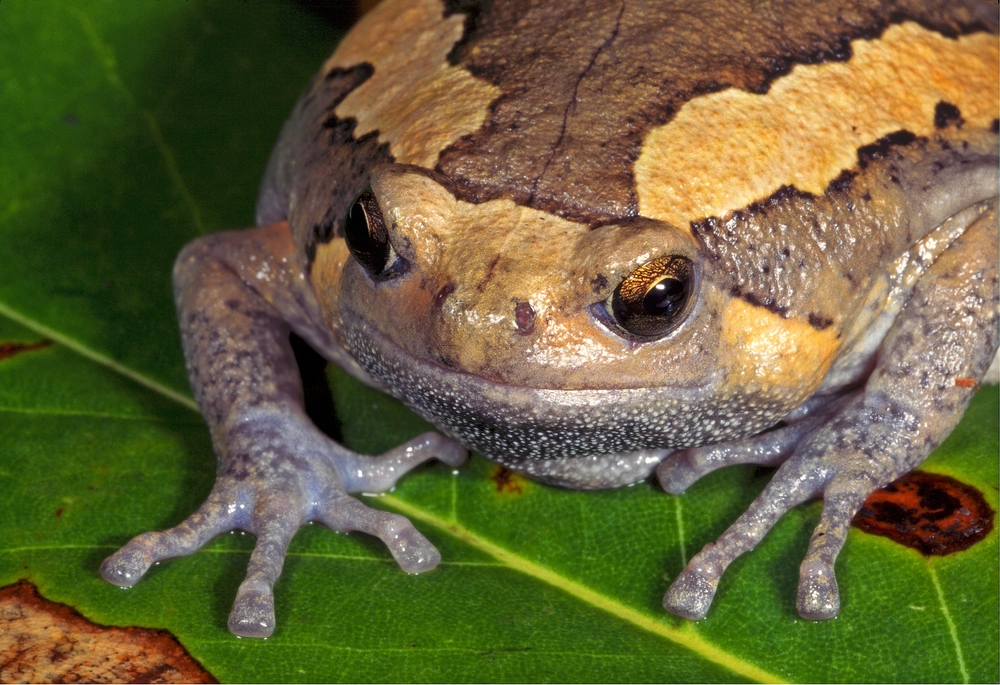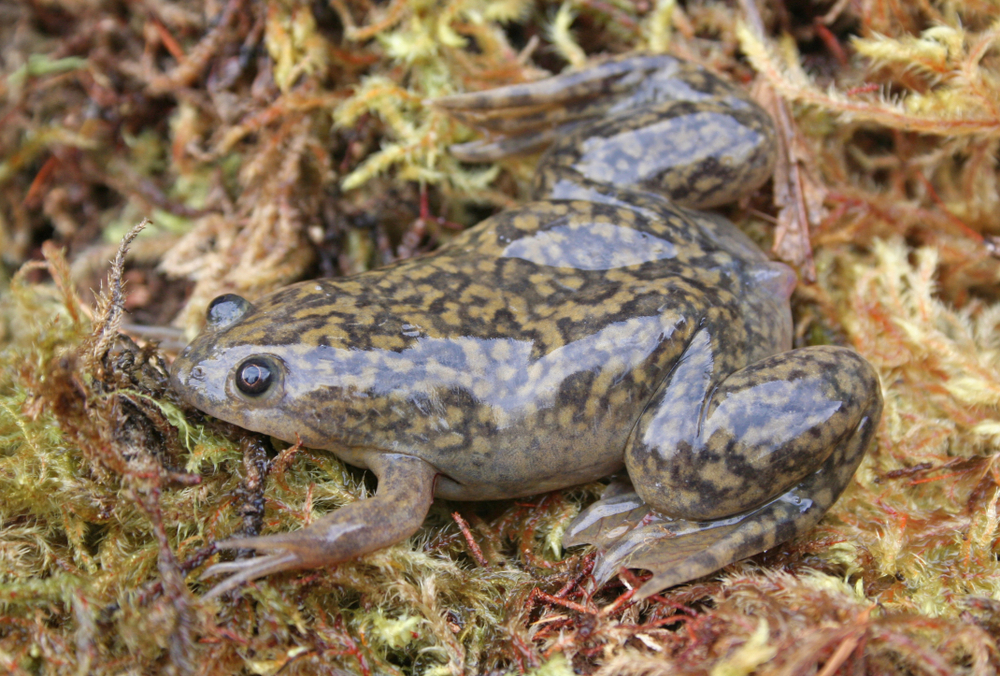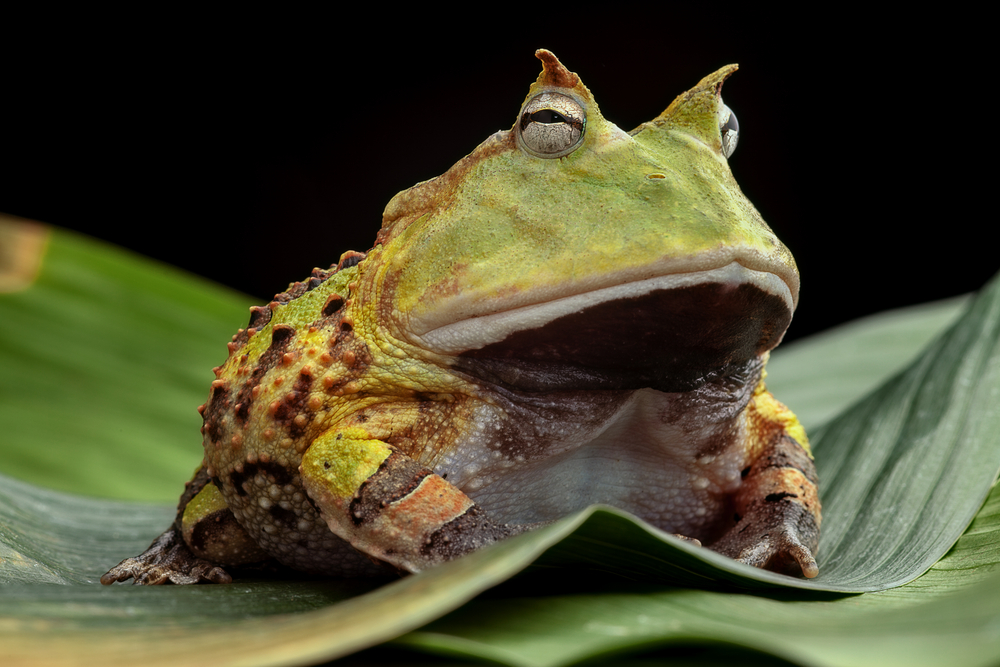About
#Amphibian
The Asian banded bullfrog (Kaloula pulchra), also known as the chubby frog, painted bullfrog, or bubble frog, is a stout, burrowing amphibian native to Southeast Asia. It belongs to the Microhylidae family and is found across countries like Thailand, Myanmar, Cambodia, Vietnam, Malaysia, and parts of India and China. Its ability to thrive in urban and rural environments has made it one of Asia’s most recognizable amphibians.
This small to medium-sized frog grows to about 7–8 cm (3 inches) and has a rounded body with a narrow head. Its distinctive appearance features a dark brown to black back with broad, orange or cream-colored bands running along each side. When threatened, it can inflate its body to appear larger and secrete a sticky, milky toxin that deters predators.
The Asian banded bullfrog is a nocturnal insectivore, feeding on ants, termites, beetles, and other small invertebrates. It spends much of its time hidden underground or beneath leaf litter, emerging after heavy rains to breed in temporary pools and ditches. Its loud, deep croaking is a familiar sound in monsoon seasons.
This species is highly adaptable and is commonly found in gardens, rice fields, and roadside puddles. It is popular in the pet trade due to its calm temperament, ease of care, and comical appearance. In the wild, it plays an important role in controlling insect populations.
Currently listed as Least Concern by the IUCN, the Asian banded bullfrog remains widespread and resilient, though localized threats include habitat disturbance and pollution.
Threatened:
Extinct
Critically Endangered
Endangered
Vulnerable
Near Threatened
Least Concern





































































